In August the Army celebrated 75 years of airborne operations. Some highlights:
August 1940:
A test platoon from Fort Benning's 29th Infantry Regiment executes the Army's first airborne training jump less than 45 days after airborne was formed. The U.S. joined several world powers who had also developed the capability after World War I, including Italy, the Soviet Union, Germany, and Great Britain.
May 1941: Germany's massive airborne invasion of Crete, Greece captures the island and thousands of British and Greek prisoners, but massive casualties convince Adolf Hitler to never use the tactic again. Allies, meanwhile, draw different conclusions and use airborne operations, with mixed results, throughout the war.
Allies, meanwhile, draw different conclusions and use airborne operations, with mixed results, throughout the war.
November 1942: The U.S. carried out its first major airborne assault of World War II during the largely-amphibious invasion of North Africa, Operation Torch . The U.S. 509th Parachute Infantry Regiment flew from Britain into present-day Algeria to capture two airfields near Oran. Bad weather and communications diverted aircraft and scattered the drop, and while some would participate in battle in Tunisia, the paratroopers were too disorganized to participate in the battle for Oran.
. The U.S. 509th Parachute Infantry Regiment flew from Britain into present-day Algeria to capture two airfields near Oran. Bad weather and communications diverted aircraft and scattered the drop, and while some would participate in battle in Tunisia, the paratroopers were too disorganized to participate in the battle for Oran.
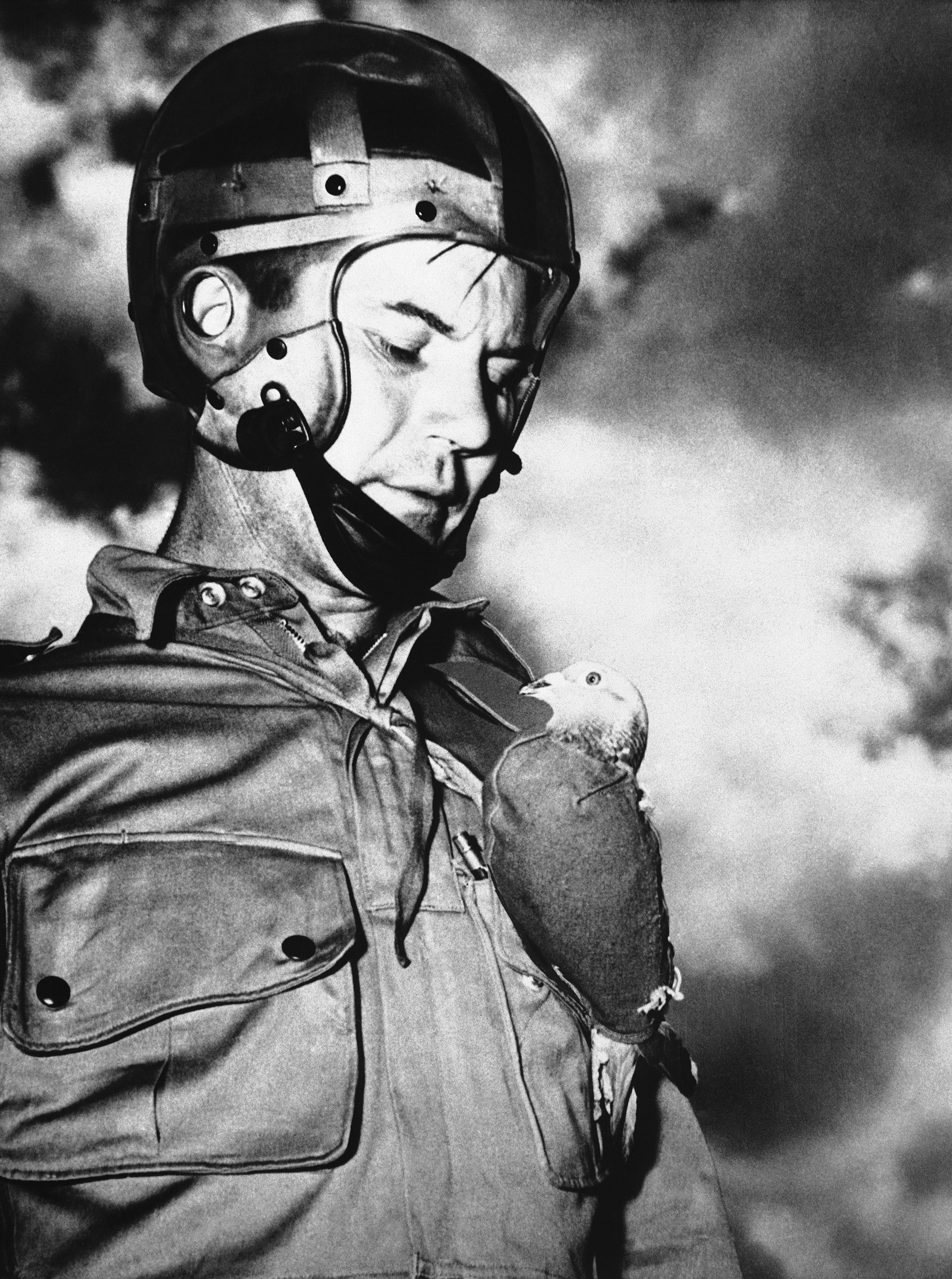
When U.S. Army paratroopers, dropped behind enemy lines and cannot use radio communication for fear of revealing their positions, they use trained pigeons that were also dropped by parachute in special containers or pigeons strapped to their chests. The pigeon, encased in a special jacket, is attached to the paratrooper's jacket on Sept. 11, 1943.
Photo Credit: AP
June 1944: Operation Overlord, the invasion at Normandy on D-Day, started with a 1,200-plane airborne assault into German-occupied France hours before the larger beach landings. American paratroopers from the 101st and 82nd Airborne divisions achieved mixed results. They accomplished some key goals such as securing flanks for the amphibious invasion, though they also suffered missed landing zones and failure to meet other D-Day objectives.
March 1945: More than 16,000 allied paratroopers participate in Operation Varsity during the last major airborne operation of WWII and the largest one-day drop. The mission successfully overwhelmed the German opposition. Casualties for the two divisions totaled 2,700, with about 3,500 Germans captured and an unknown number of casualties.
The mission successfully overwhelmed the German opposition. Casualties for the two divisions totaled 2,700, with about 3,500 Germans captured and an unknown number of casualties.
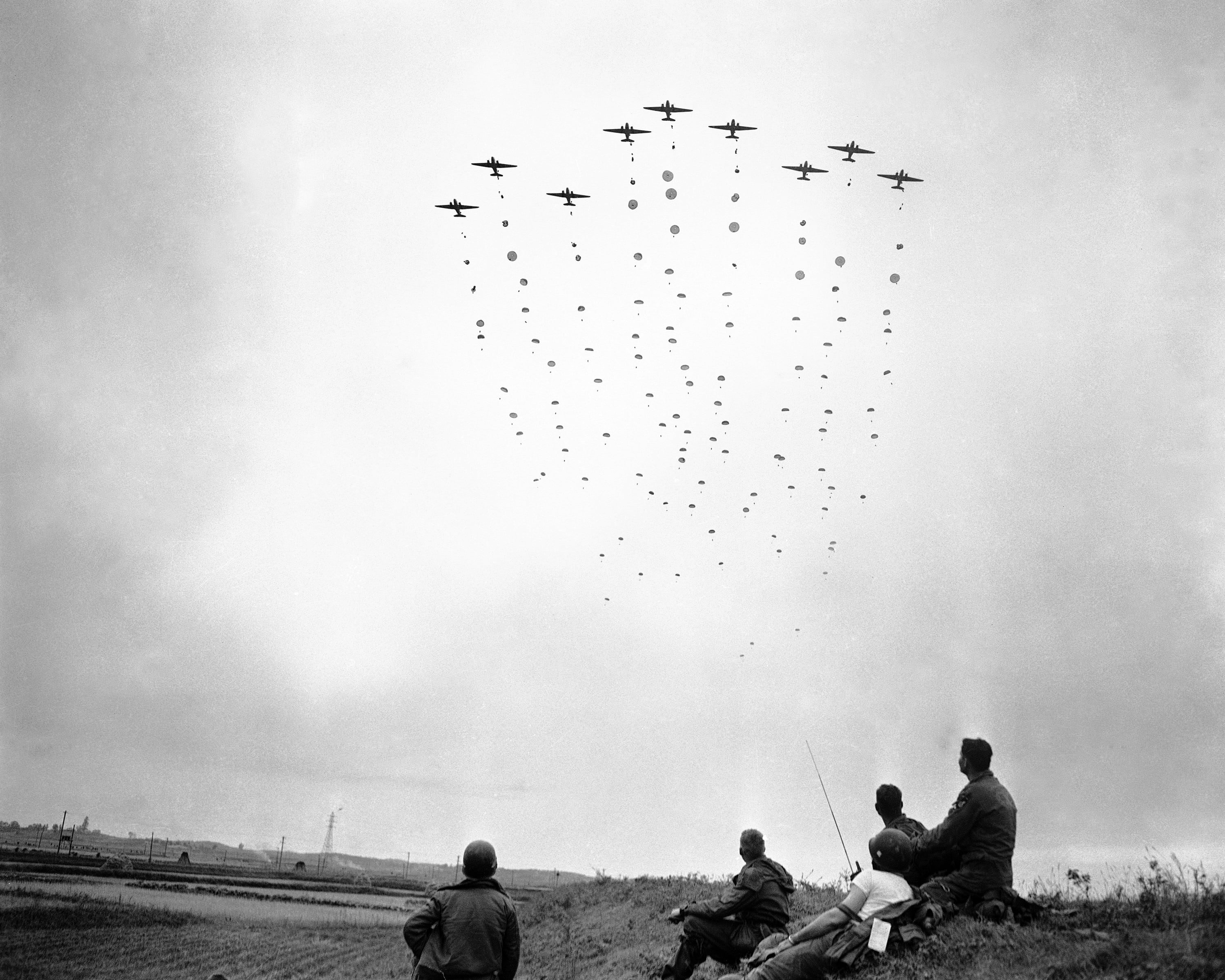
U.S. paratroopers leave their planes in a mass drop behind enemy lines in the Sunchon area of North Korea on Oct. 25, 1950 during an operation designed to block the escape route of the retreating Chinese and to attempt to rescue American prisoners. Members of an advance party (foreground) watch the landing.
Photo Credit: Max Desfor/AP
March 1951: During Operation Tomahawk, the second of two Korean War jumps, about 3,400 ‘Rakkasans’ with the 187th Airborne Regimental Combat Team jump behind enemy lines to trap enemy forces north of Seoul. But as with the first airborne drop in 1950 north of Pyongyang, most of the opposing Chinese and North Korean forces they hoped to corner escaped.
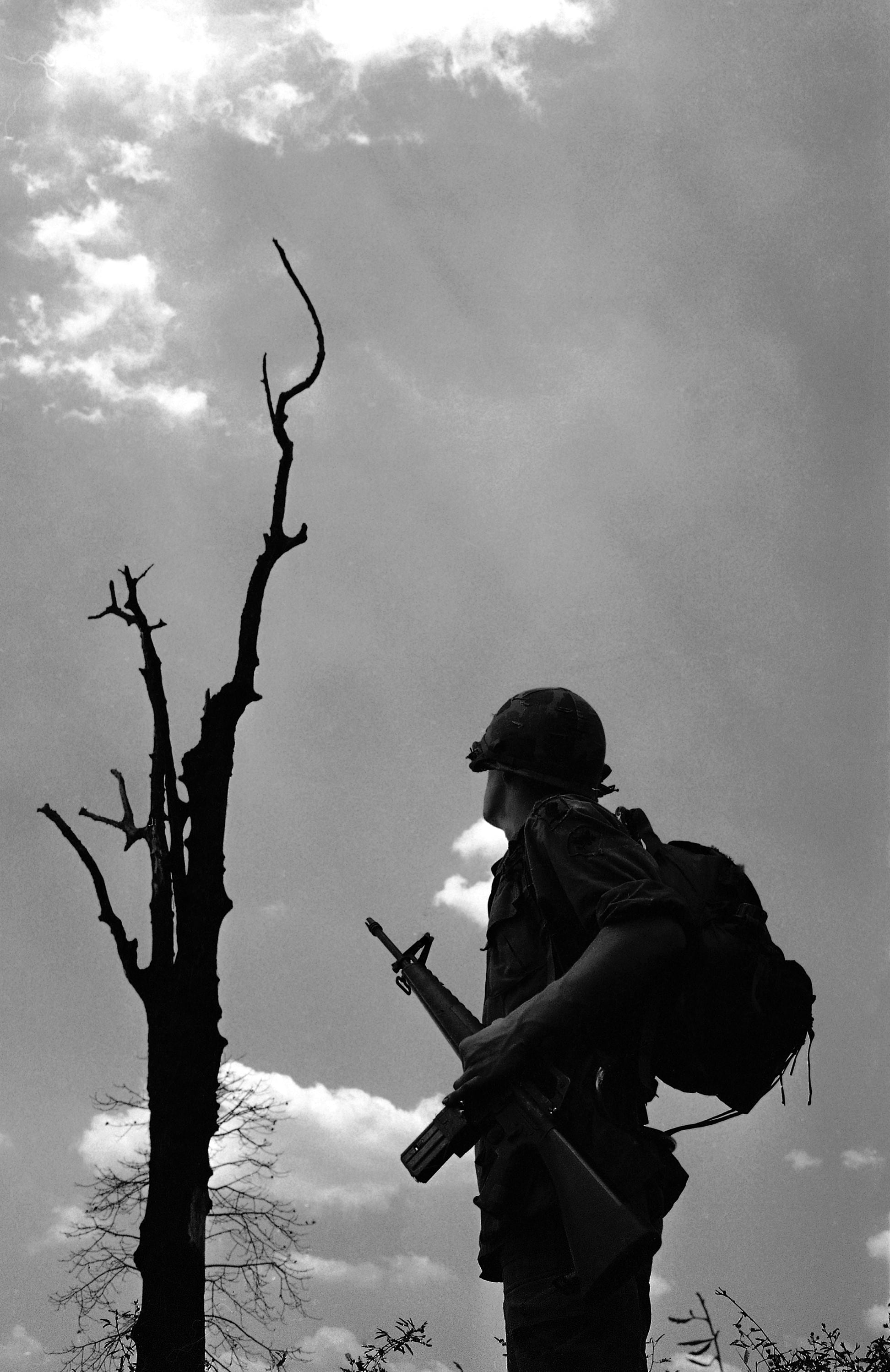
A dead jungle tree catches the eye of a paratrooper from the 173rd Airborne Brigade during Operation Junction City in Vietnam on Feb. 26, 1967.
Photo Credit: AP
February 1967: About 800 paratroopers engage in America' lone combat jump into Vietnam, Operation Junction City. While able to inflict significant causalities, the objective of finding and destroying the Viet Cong's central command post failed. Most troops entered battle in Vietnam via air assault (helicopter).
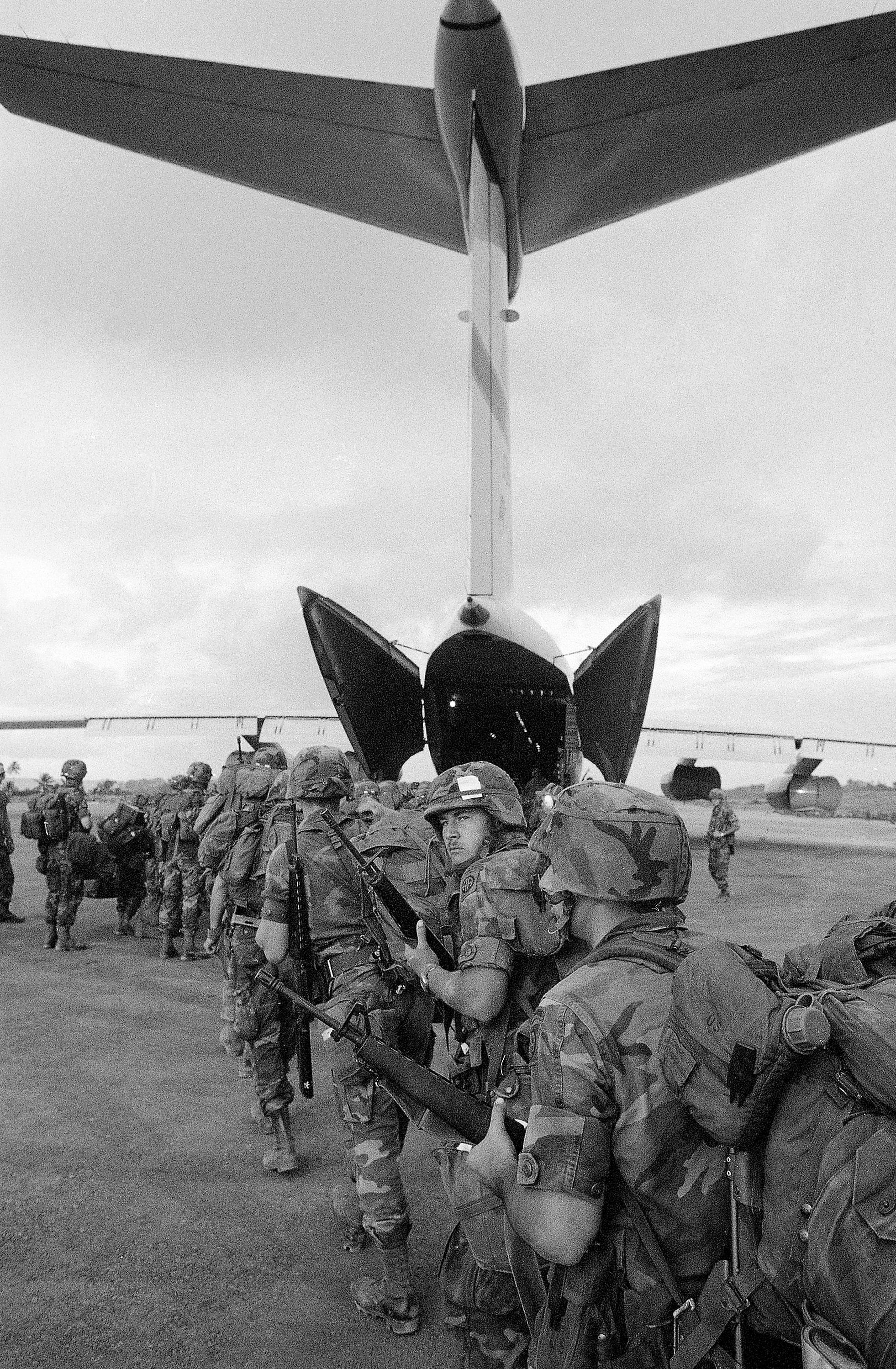
An 82nd Airborne trooper looks over his shoulder to take a last look at Grenada before boarding a Military Airlift Command plane for the trip home at Point Salines airfield on Friday, Nov. 4, 1983.
Photo Credit: Pete Leabo/AP
October 1983: The United States invades Grenada with Operation Urgent Fury. Following an initial wave of 500 Rangers, about 6,500 troops enter in an amphibious, airborne, and helicopter assault of the Caribbean island nation with a population of about 90.000 that met minimal local and Cuban resistance.
December 1989: The 82nd Airborne Division makes its first jump since World War II when 4,000 paratroopers, along with the 75th Ranger Regiment, drop in to invade Panama and ultimately help remove dictator, drug trafficker, and former CIA-informant Manuel Noriega.
September 1994: Planes loaded with paratroopers from the 82nd Airborne Division were already in the air and on the way to invade Haiti during the UN-authorized Operation Uphold Democracy. Before they arrived, though, 1991 military coup leader and dictator Raoul Cedras decided to step down and restore the democratically elected president, Jean-Bertrand Aristide.
decided to step down and restore the democratically elected president, Jean-Bertrand Aristide.
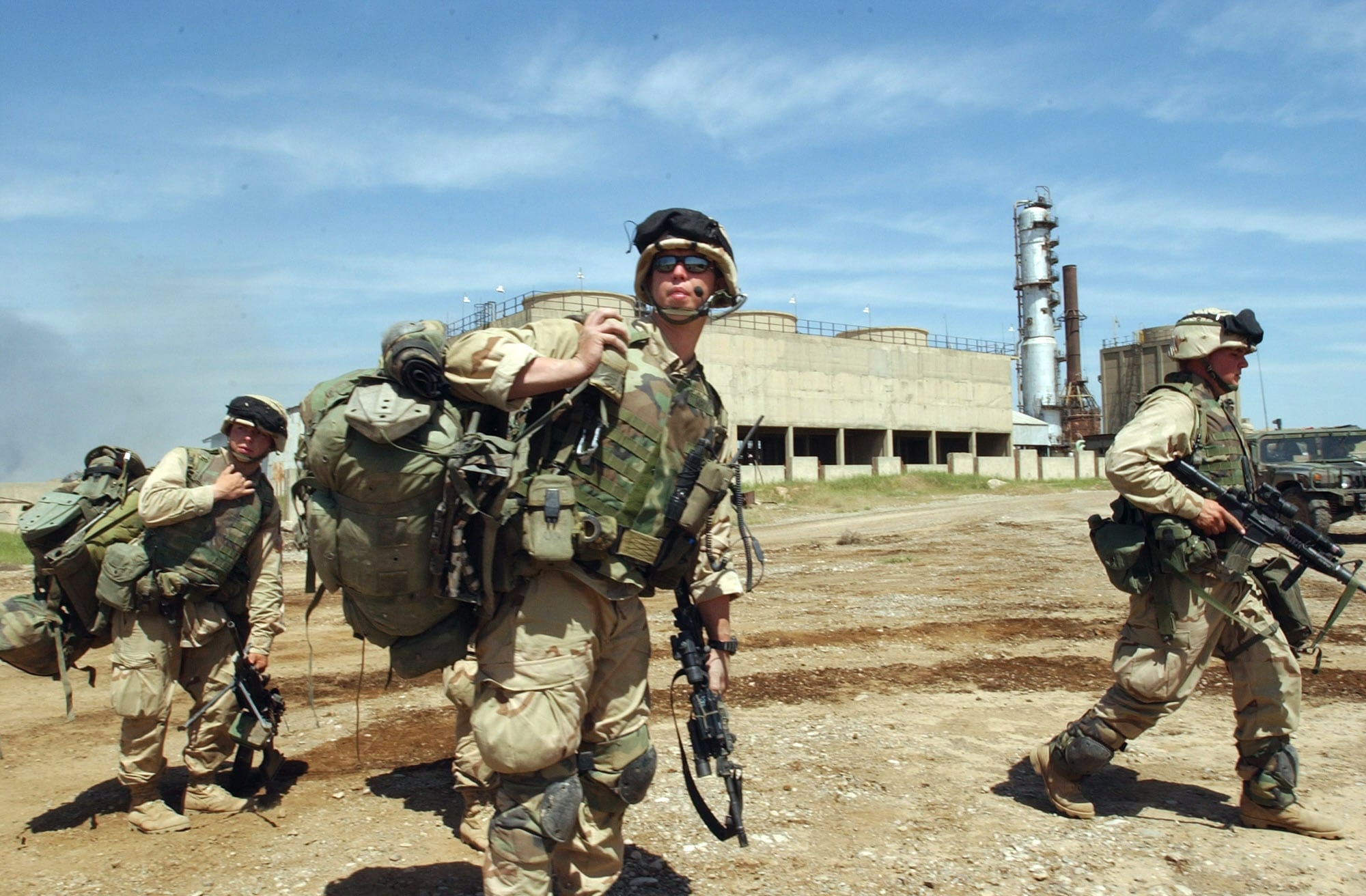
American soldiers with the 173rd Airborne Brigade out of Vicenza, Italy, head to their vehicles as they guard an oil-gas separation facility in the northern oil fields on the outskirts of Kirkuk, northern Iraq, on April 12, 2003.
Photo Credit: Peter Dejong/AP
March 2003: About 950 paratroopers from the 173rd Airborne Brigade jump into Northern Iraq into Bashur Airfield, which had already been secured by the Army's 10th Special Forces Group and Kurdish allies.





